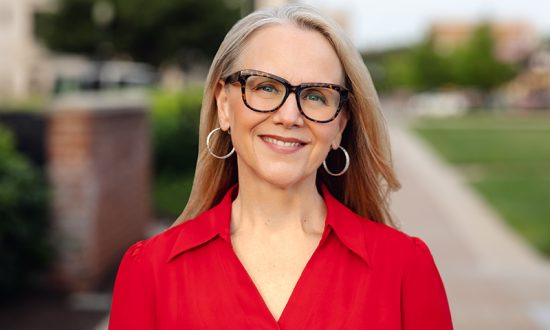Dr. Bouchey is Associate Professor and Vice Provost of Digital Strategy and Operations at National Louis University where she is responsible for standards of quality and service for online programming across the institution, alternative graduation pathways, learning experience design, and academic innovation, overall. Dr. Bouchey holds a B.A. in Psychology from the University at Albany, an M.B.A. in Entrepreneurship from Rensselaer Polytechnic Institute, and a Doctorate in Education from Northeastern University. Her research interests include the nature and future of organizational structures of online units in institutions of higher education, as well as inventive and high-impact pedagogical practice in online teaching, inclusive of artificial intelligence and machine learning. Dr. Bouchey writes and is widely quoted in the academic and popular press; her articles and curriculum vitae can be accessed here: www.drbouchey.com.
Institutions of higher education are facing a significant challenge as their traditional focus on incoming freshmen dwindles due to demographic changes. To ensure long-term sustainability, it is crucial that we diversify our approaches. Many institutions have already recognized the importance of online education and have invested in or entered the online learning market to tap into the adult student demographic, including younger students who value the flexibility of online learning. However, simply launching online programs is not enough. It is essential to carefully identify the target student demographic and ensure that programming meet their needs. This includes aligning marketing, enrollment, and support structures with the needs of students learning at a distance and adapting key policies to serve this newer audience effectively.
While professional associations like the Online Learning Consortium, UPCEA, and Quality Matters provide evidence-based instruments for optimizing online programs, a surgical approach based on actual student personas is equally critical. By developing profiles of the intended learners, we can curate strategies to attract and serve them effectively. One persona that is particularly important in today’s higher education landscape is the “some college, no credential” (SCDC) learner. These are individuals who have attempted postsecondary education but have not received a credential. According to the National Student Clearinghouse Research Center, this group reached over 40 million in 2021, and the number continues to rise. Institutions can identify the number of SCDC learners in their state, which could comprise more than 30% of college-age individuals. This presents a significant opportunity for institutions to help these learners complete a credential and improve their lifelong earnings and social mobility.
To attract SCDC learners back to our institutions of higher education, we need to implement transfer-friendly policies that remove barriers to transferring credits. Streamlined onboarding processes and flexible programming are also essential, considering the circumstances and needs of these learners. Honoring previous experience through credit for prior learning (CPL) and competency-based (CB) formats is another important aspect of serving a market that has not only amassed previous credits, but likely significant life and work experiences as well. Too, these learners are likely balancing working, family situations, and other obligations so their time is limited for learning—where accelerated pathways such as CPL and CB can be important levers for an institution to utilize.
In addition to these strategies, it is crucial to design an infrastructure that supports and engages adult learners with the knowledge that we cannot simply provide services in the same manner to adult learners as we do with incoming freshman. For example, adult students may need a different type of orientation knowing they may not be able to carve out a full day (or week) to do so.
Attracting SCDC learners is not just about combating the impact of demographic changes but also about fulfilling the promise of higher education to improve social and economic progression. We owe it to these learners to find ways to bring them back into post-secondary schooling, support them in earning a credential affordably and within a reasonable timeframe, and then helping them stay in or rejoin the workforce. The desirable countermeasure to declining freshman enrollment is but one of the many benefits, so too is the diversity of voice in our student populations, the impact to our surrounding communities, and in the development of our faculty and staff as they look to serve a new audience.




